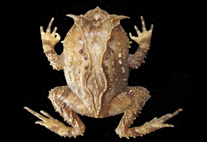Abstract
Three new free-living nematode species belonging to the genus Mudwigglus gen. n. are described from the continental slope of New Zealand. The new genus is characterised by four short cephalic setae, fovea amphidialis in the shape of an elongated loop, narrow mouth opening, small, lightly cuticularised buccal cavity, pharynx with oval-shaped basal bulb, and secretory-excretory pore (if present) at level of pharyngeal bulb or slightly anterior. Mudwigglus gen. et sp. n. differs from other genera of the family Diplopeltidae in the combination of the following traits: presence of reflexed ovaries, male reproductive system with both testes directed anteriorly and reflexed posterior testis, and presence of tubular pre-cloacal supplements and pre-cloacal seta. Mudwigglus patumuka gen. et sp. n. is characterised by gubernaculum with dorso-cau-dal apophyses, vagina directed posteriorly, and short conical tail with three terminal setae. M. macramphidum gen. et sp. n. is characterised by long fovea amphidialis, cylindrical buccal cavity, gubernaculum without apophyses, vagina at right angle to body surface, and conico-cylindrical tail without terminal setae. M. plebeius gen. et sp. n. is characterised by cylindrical buccal cavity with cuticularised ring, gubernaculum with dorso-caudal apophyses, females with vagina direct-ed posteriorly, and conico-cylindrical tail with two terminal setae. Diplopeluta nellyae Vincx and Gourbault, 1992 is trans-ferred to Mudwigglus gen. n. based on observations of paratypes from New Caledonia, and of specimens from the New Zealand continental slope, which both show the presence of two testes facing anteriorly. M. macramphidum gen. et sp. n. was restricted to a single site on Chatham Rise crest (350 m water depth), whereas M. patumuka gen. et sp. was recorded from six sites on western Chatham Rise (350–2800 m). M. plebeius gen. et sp. n. was recorded from 13 sites on Chatham Rise and two sites on Challenger Plateau (264–2300 m). Mudwigglus nellyae comb. n. was restricted to two Challenger Plateau sites. All Mudwigglus gen. n. species appear to be restricted to subsurface sediments.

